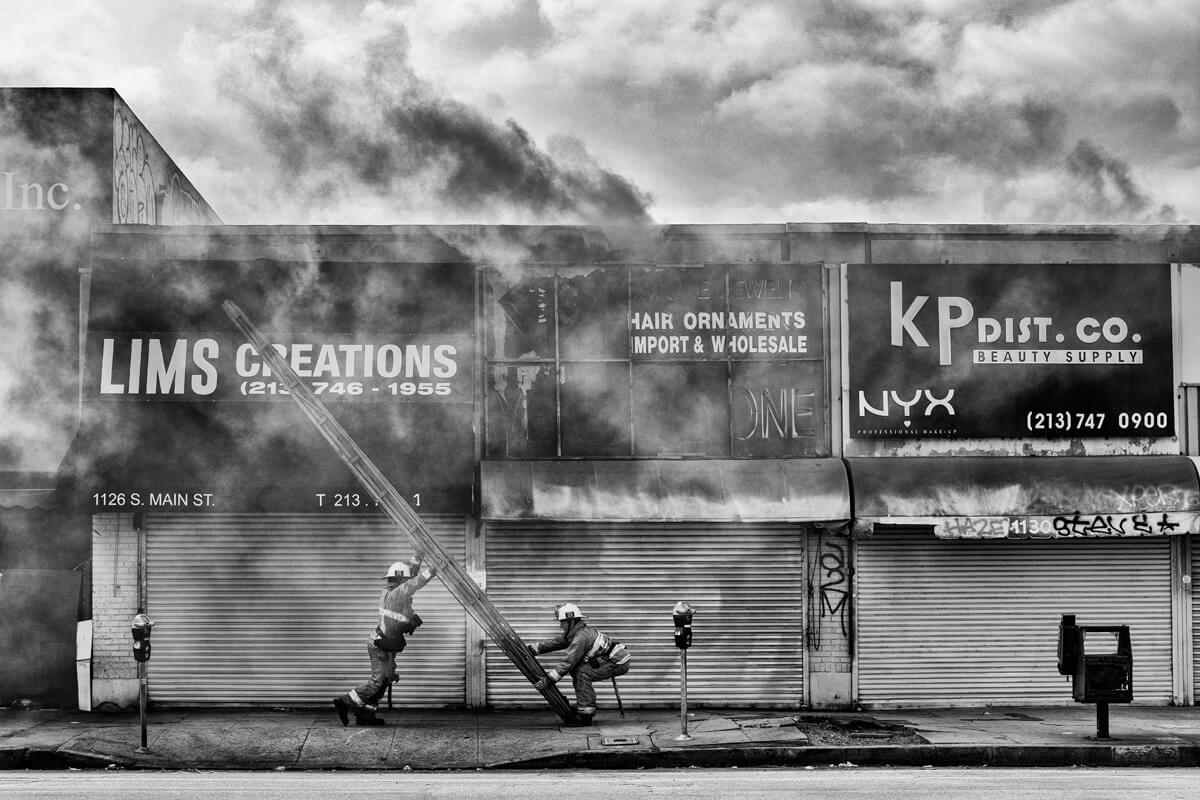Carl Young is a Fine Art and Street photographer based in Los Angeles, CA. He has a BFA from Temple University and has studied at the International Center of Photography in New York City, and at the Los Angeles Center of Photography.
He is currently a member of the Street LA Photo Collective. After a career in New York City creating ad campaigns and directing photo shoots for Fortune 500 companies, he now devotes as much time as possible to exploring and documenting the people and culture of Los Angeles.
Carl's work has been included in many juried exhibitions and gallery shows, his work has been published in various photography magazines. Carl counts
Gary Winogrand,
René Burri, and
Martin Parr as some of his strongest Street photography influences.

Warehouse District Fire
© Carl Young

